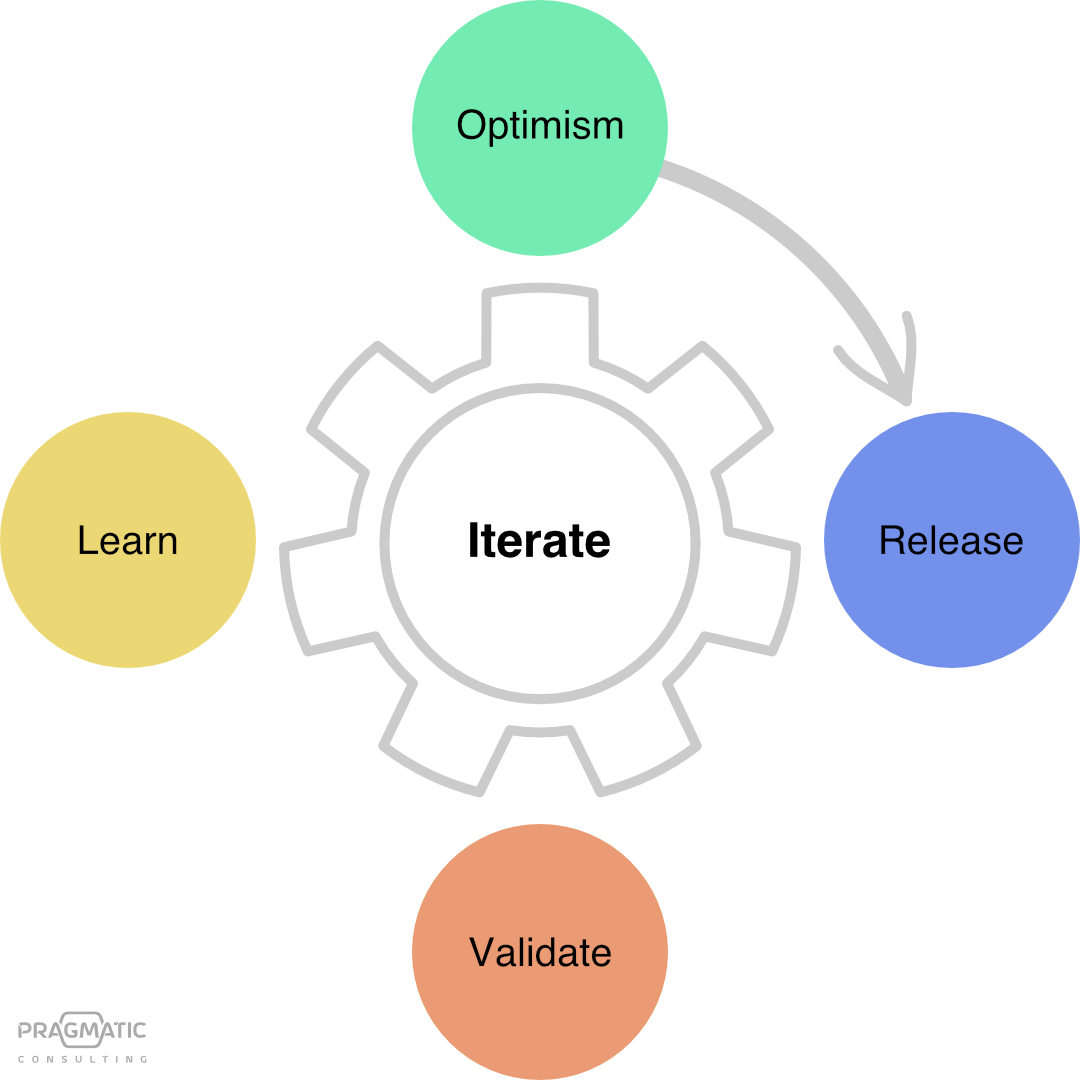Talk is cheap!! How to validate your startup product the right way?
It’s not about how exciting your idea is; instead, it is about how much value it will bring to your end users. People will use your product if they find value in it. Not because it is exciting and novel.
The odds are against you
Having a good idea and execution doesn’t guarantee that your startup will make it. Your startup will probably fail. If you don’t believe me look at the Google Graveyard.
Google has deep pockets, proficient engineers, and especially a big brand. It can release robust products and get people to use them. Yet, a lot of Google projects didn’t make it.
But should you accept this?
My answer is NO.
Improve your odds of success with the innovation engine
So, you want to launch a product and have better odds of success. Enter the innovation engine; it’s a simple loop that allows you to build your product leanly.

The innovation engine runs like this:
- Optimism: You believe in your idea and gather some steam to create it.
- Release: You build a prototype or a minimum viable product MVP.
- Validate: You test how well the market receives your current version of the product.
- Learn: You adjust your product based on user feedback, collected data, and synthesized results.
- Iterate: You release a new version, rinse and repeat.
Avoid falling for the praise trap
You can have the most exciting idea out there, and people will cheer you up and compliment you, but at the end of the day, what matters is do they pay you to use your product or not.
People will vote with their money and time. If they spend these critical resources on your product, you have a winning idea. If not, then try something else.
Let people tell you if your idea is exciting or not with their money and time, not empty promises, because talk is cheap!
Stay away from vanity metrics
Vanity metrics give you a false sense of achievement while you might be doing badly!
For instance, you might be looking at the number of page views on your website and think you are doing well because you have an enormous number of that metric. But instead, you should check how many signups you have for your free plan.
When launching your startup, you must know what metrics to look for. Picking good metrics depends heavily on your business model.
Metrics for the SaaS business model are different from the marketplace business model and so forth.
Try to pick what matters to your startup, and avoid flooding yourself with useless metrics.
Also, avoid approaching an investor with some vanity metrics because he will see through this.
Having good metrics helps you build a robust startup and product. You have a realistic view of the current state of your startup, and you act upon this data to steer in the right direction—a proper data-driven startup.
If you want to get an overview of metrics for your business model, then check this video by Anu Hariharan from Y-Combinator.
Conclusion
Validating your idea using pragmatic metrics while avoiding the praise trap will help you innovate faster and in the correct direction.
You don’t want to build a product no one uses or cares about.
 Mourad HAMOUD
Mourad HAMOUD